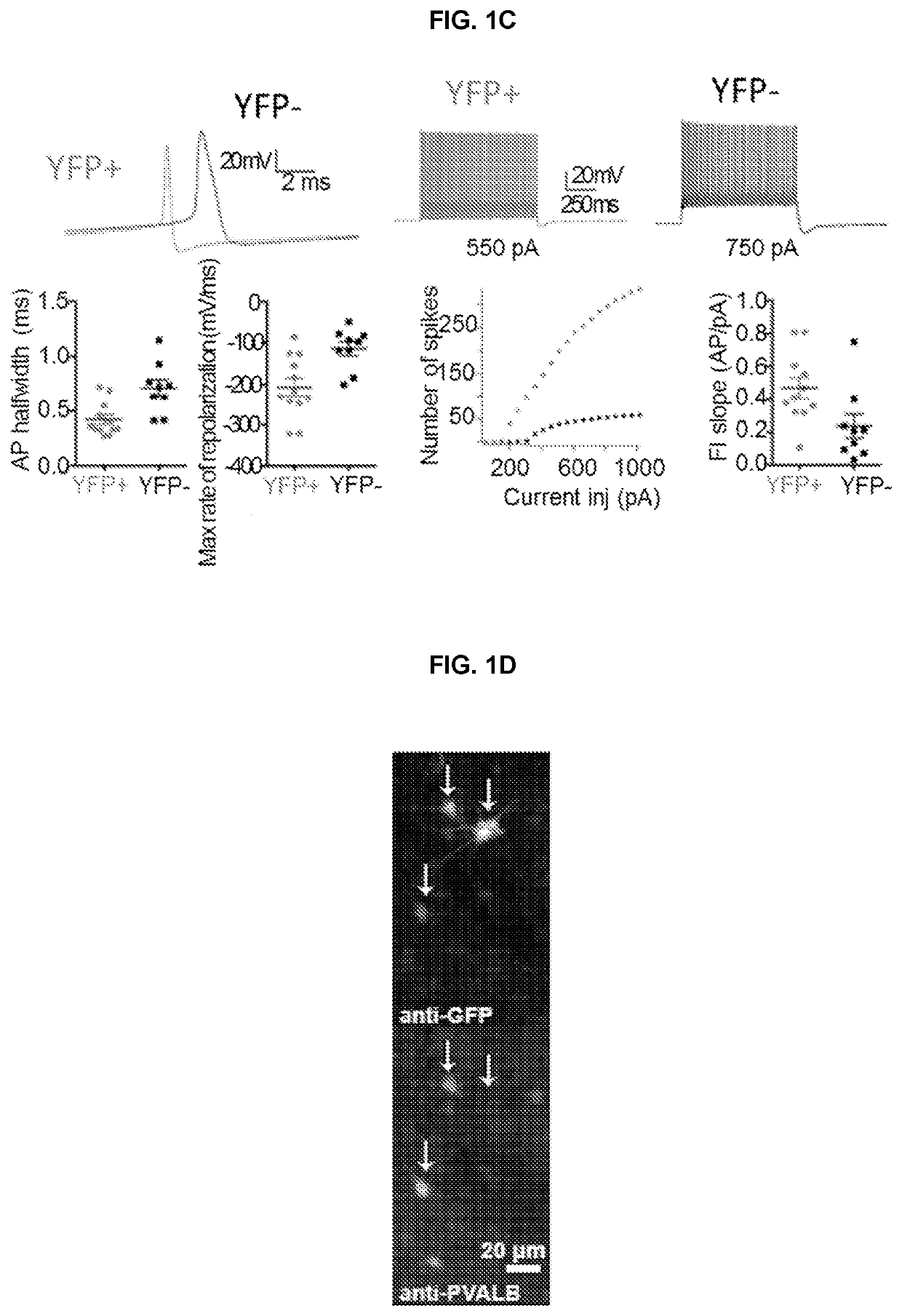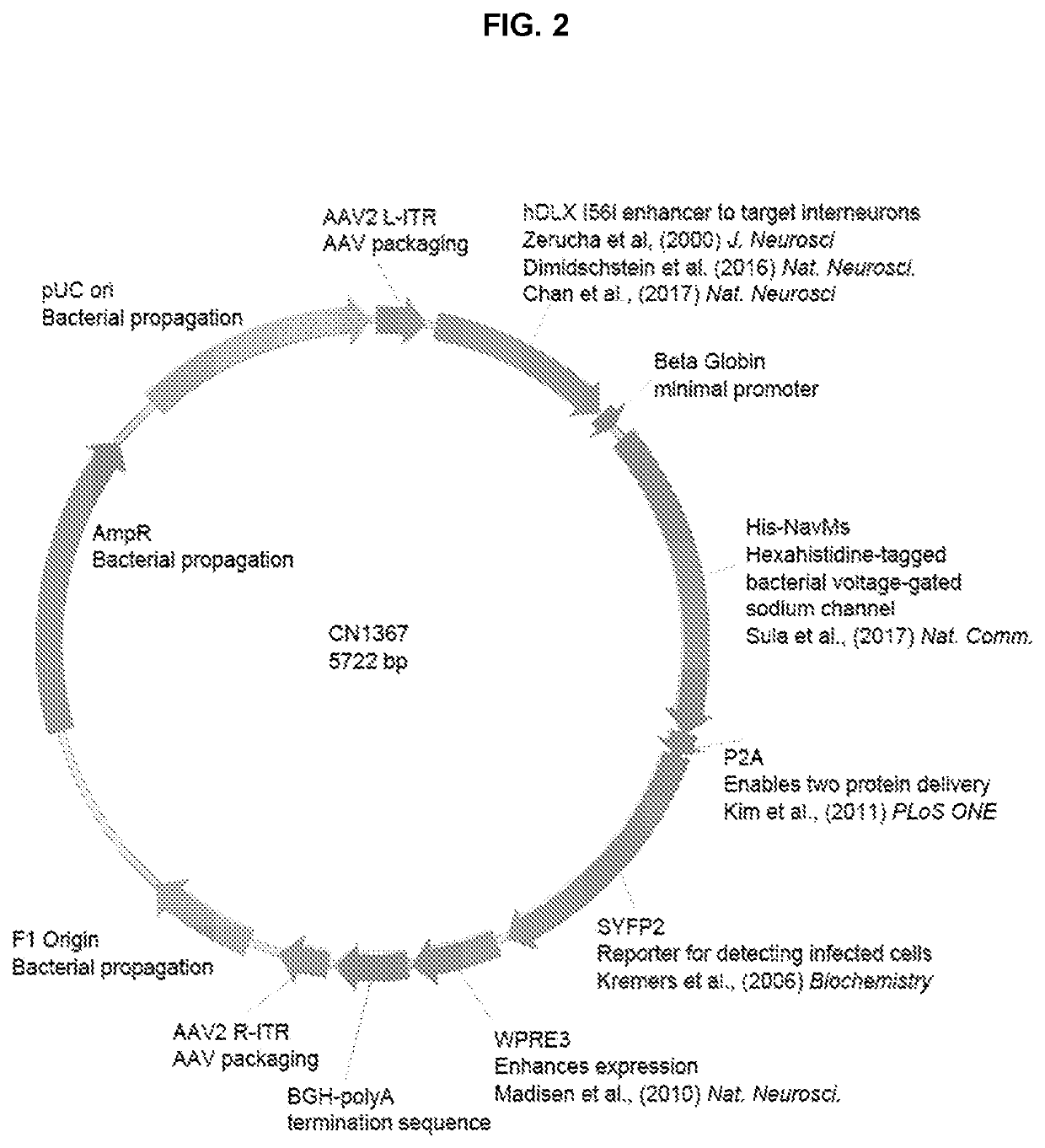Rescuing voltage-gated sodium channel function in inhibitory neurons
a voltage-gated sodium channel and inhibitory neuron technology, applied in the direction of peptide/protein ingredients, genetic material ingredients, peptides/protein ingredients, etc., can solve the problems of multiple seizures per day in children with ds, poor language and motor skills development, and patients at risk of numerous associated conditions including orthopedic developmental problems, so as to reverse or ameliorate the effect of nav1.1 voltage-gated sodium channel dysfunction, rapid and high protein expression
- Summary
- Abstract
- Description
- Claims
- Application Information
AI Technical Summary
Benefits of technology
Problems solved by technology
Method used
Image
Examples
Embodiment Construction
[0025]In vertebrates, voltage gated sodium channels (Navs) are heteromeric protein complexes including a large central pore composed of alpha subunits, and smaller auxiliary subunits composed of beta subunits which modulate the kinetics and subcellular distribution of the pores. The alpha subunits are encoded by a family of 9 different genes (from SCN1A to SCN11A), and the beta subunits are encoded by 4 different genes (SCN1B to SCN4B), and these gene members show cell- and tissue-specific expression patterns. Each of the nine different alpha subunit genes seeds a distinct Nav channel complex, making 9 different subtypes (Nav1.1-Nav1.9), and these nine Nav channels display tissue specific localization and functional differences (See, Goldin, (2001) Annu Rev Physiol 63: 871-94; and Yu et al., (2003), J. Neurosci 23: 7577-758).
[0026]Navs are central for neuron function, being responsible for initiating the rapid upstroke of action potentials in excitable nervous system cells, and Nav1...
PUM
| Property | Measurement | Unit |
|---|---|---|
| Fraction | aaaaa | aaaaa |
| Current | aaaaa | aaaaa |
| Time | aaaaa | aaaaa |
Abstract
Description
Claims
Application Information
 Login to View More
Login to View More - R&D
- Intellectual Property
- Life Sciences
- Materials
- Tech Scout
- Unparalleled Data Quality
- Higher Quality Content
- 60% Fewer Hallucinations
Browse by: Latest US Patents, China's latest patents, Technical Efficacy Thesaurus, Application Domain, Technology Topic, Popular Technical Reports.
© 2025 PatSnap. All rights reserved.Legal|Privacy policy|Modern Slavery Act Transparency Statement|Sitemap|About US| Contact US: help@patsnap.com



